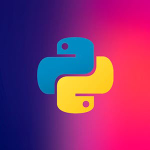

Has your secure datagram protocol been audited by experts?

MOSH CONNECT 60004 4NeCCgvZFe2RnPgrcU1PQwĪlthough this approach is new, AES-128 OCB has been around for a while and the authors note that they invite further scrutiny: This provides an encrypted endpoint with a fixed key, which is generated at server startup and printed along with the connection information: $ mosh-server Packets sent via the Mosh connection are encrypted with AES-128 in OCB mode. The server's IP address must remain fixed however. (This is in essence roughly how TCP works under the covers in any case.) It is also this property which lets the Mosh client roam between different IP addresses or (in the future) between IPv4 and IPv6. Each packet in the connection has an incrementing number, and the client and server both build up a list of known packets, with the Mosh libraries initiating retransmission where necessary. The use of UDP, rather than TCP, also means the Mosh client/server connection has to do its own state management. However, since the connection itself is stateless at the network layer, if the client moves to a different IP address then UDP packets can come from a different IP address (sending to the same server) without a loss of connectivity.

The Mosh client then is given the address of the server (and UDP port) and initiates the connection by sending data in packets. Mosh works by creating a server process, running in user space, listening to for UDP packets. As SSH has no knowledge of either end of the connection's use of the data, any keypresses take a minimum of one round trip to display. These two changes are clearly a significant departure from the layered architecture of connection streams like SSH, which provide the encrypted bytestream only between two end points and then let the remote server program redraw the screen. Thus, when the user types an 'X' on the keyboard, instead of having to round-trip between the client to sever and back to client to display the 'X' on screen, the Mosh client can display the 'X' immediately. Secondly, rather than providing a transparent encrypted byte stream from client to server, and having the server respond with the screen redraw mechanisms, the Mosh client provides a variation of local echo.

As a result, if the signal drops or the device's IP address changes (because it is roaming between a WiFi and a cellular network, for example) then the connection is not reliant on the transport layer maintaining state connectivity. Firstly, the connection is IP address agnostic rather than using a TCP/IP connection, data is sent via UDP/IP.There are two significant features that distinguish Mosh from alternative mechanisms: The principles behind MoSH are due to be presented in a technical paper at the 2012 USENIX Annual Technical Conference next month. Lists Unordered Lists Ordered Lists Other Lists HTML Block & Inline HTML Classes HTML Id HTML Iframes HTML JavaScript HTML File Paths HTML Head HTML Layout HTML Responsive HTML Computercode HTML Semantics HTML Style Guide HTML Entities HTML Symbols HTML Emojis HTML Charset HTML URL Encode HTML vs.The Mobile Shell, or MoSH, has been released on GitHub as a replacement for SSH for mobile devices.


 0 kommentar(er)
0 kommentar(er)
